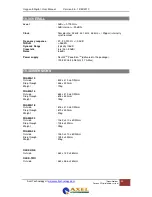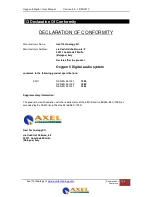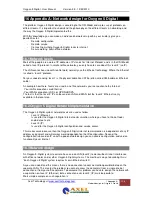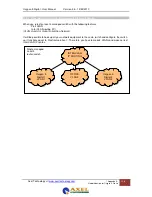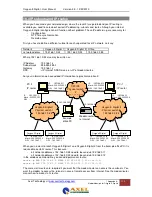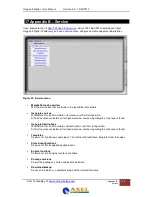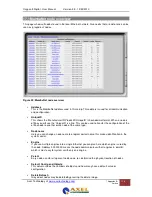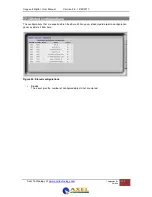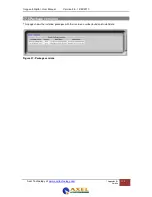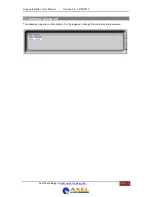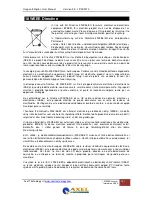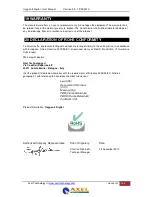
Oxygen 5 Digital - User Manual
Version 2.5 - 12/22/2010
Axel Technology srl
www.axeltechnology.com
|
Appendi x A -
Network design for Oxygen 5 Digital
111
16.5 Remote access
Now you have setup your network and IP addressing correct you have to do one last step before you
can remote access your Oxygen 5 Digital systems. There are also different methods for remote
access, for all methods you have to check the manual of your modem/router how to setup.
1) VPN connection
Virtual Private Network is a secure way to have remote access and you can use the internal IP
numbers at your remote location.
2) Port redirection (found under NAT = Network Address Translation)
In most modems/routers you can redirect ports where you can choose the ‘Public port’ which
is accessed from internet and tell which internal IP and port it must be redirected to.
For example HTTP is normally running on port 80, and this web server is running in your local
network (IP 192.168.0.99). You also can access this webserver from remote if you make a
port redirects like:
Public port: 9080 is redirected to Private IP: 192.168.0.99, Private port: 80
Public port: 9081 is redirected to Private IP: 192.168.0.100, Private port: 80
If you are on a remote location start your webbrowser and type: <WAN-IP>:9080 you will see
the internal webbrowser 1 and with <WAN-IP>:9081 you will see internal webbrowser 2.
A port redirect is less secure than VPN.
3) Open ports (found under NAT = Network Address Translation).
An open port you may give a internal private IP address, the disadvantage of an open port is
you never can reach two IP-addresse s on the same port number. So one port 80 open to
webserver 1 you can not reach webserver 2 with an open port.
An open port is less secure than port redirect, this because well known protocols are on their
own well known port numbers.
If AXEL TECHNOLOGY ask for remote assistance it is required you make a redirect to internal Private
IP 22 of the Oxygen 5 Digital rack. If we want to have remote access via port redirects in the IP subnet
and IP route example as seen before we have to make the following configuration in the
modem/router:
Static routes:
192.168.1.0/24 to 192.168.0.11
192.168.2.0/24 to 192.168.0.12
Port redirects:
Public port 9001 to Private IP: 192.168.1.200, Private Port: 22
Public port 9002 to Private IP: 192.168.2.200, Private Port: 22



